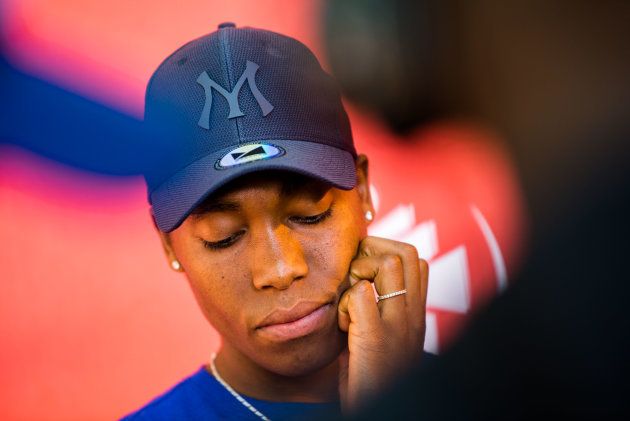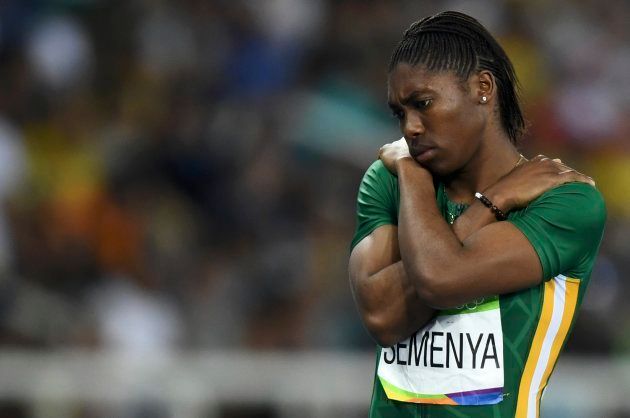
The International Association of Athletics Federations [IAAF] approved controversial rule changes for athletes with hyperandrogenism on Thursday, setting a limit on the permissible naturally produced testosterone in female competitors running 400m, 800m and 1,500m races.
The rule, which is obviously targeting Caster Semenya, will force her either to take testosterone-lowering medication to reduce her naturally occurring testosterone levels, or switch to longer-distance events. It will come into effect from November 1, 2018.
"All medication has side effects, it could cause different side effects based on how much she is taking. It could make her more 'male' with more facial hair -- side effects can occur. Prof Yoga Coopoo, HoD Sport and Movement Studies at the University of Johannesburg
According to the IAAF, androgen-sensitive athletes such as Semenya have to lower their testosterone levels to meet the criteria for "female athletes". But what is hyperandrogenism, and how does it affect Semenya?

What is hyperandrogenism?
Hyperandrogenism is defined as a medical condition characterised by excessive levels of androgens ("male" sex hormones like testosterone) in the female body.
HuffPost spoke to Prof Yoga Coopoo, who is the head of department of sport and movement studies at the University of Johannesburg, to delve deep into testosterone-lowering medication and how it would influence Semenya's performances.
Side-effects of testosterone-lowering medication
"All medication has side effects. It could cause different side effects based on how much she is taking. It could or make her more 'male', with more facial hair — side effects can occur," Coopoo said.
IAAF have opened a can of wormsProf Yoga Coopoo
Coopoo went on to explain that athletes with hyperandrogenism do indeed have a slight advantage, according to a 2018 case study that found that there was a percentage of improvement for hyperandrogenic athletes running the 400m and 800m.
"The study showed that athletes with hyperandrogenism running in the 400m had a 2.7 percent advantage over their opponents, while hyperandrogenic athletes running the 800m had a 1.8 percent improvement"
It basically means athletes with hyperandrogenism have a tiny advantage over other athletes in the elite ranks.

However, Coopoo went on to explain that increased testosterone alone is not the sole reason for Caster's performance.
"There are other factors involved. Semenya's advantage might come in the way she trains, her diet, good coaching ... So the advantage could be [from] her training routine".
What about other athletes?
Coopoo said the decision by the IAAF was bit of a biased one, as there are other female athletes in different sporting codes that have higher advantages. In the case study conducted, it was found that:
- Athletes with hyperandrogenism running the 400m had a 2.7 percent advantage;
- Athletes with hyperandrogenism running the 800m had a 1.8 percent advantage;
- Athletes with hyperandrogenism competing in the hammer throw had a 4.5 percent advantage.
"There is a discriminatory element to this, from a human rights point of view — the IAAF was wrong in the beginning when it began testing humans. [Semenya] has nothing to do with this; it is not within her control."
"If the IAAF are testing Caster, then it has to regulate every female athlete — this was not the right way to do it," he said. "There has been a history of hammer throw athletes who have had an advantage over their opponents because of their high testosterone levels."

Athletics South Africa has since issued a statement in which it said:
"ASA further acknowledges that the IAAF council has the authority to develop rules and regulations as the highest decision-making body between congresses past and future.
"As a federation, we will study the new regulations and compare them with the CAS recommendations to see if they are compatible and in line.
"We will further seek support from the Minister of Sport and Recreation, Sascoc, other expert institutions and relevant organisations or individuals, so that we have a full grasp of this matter and how it should be properly handled."
